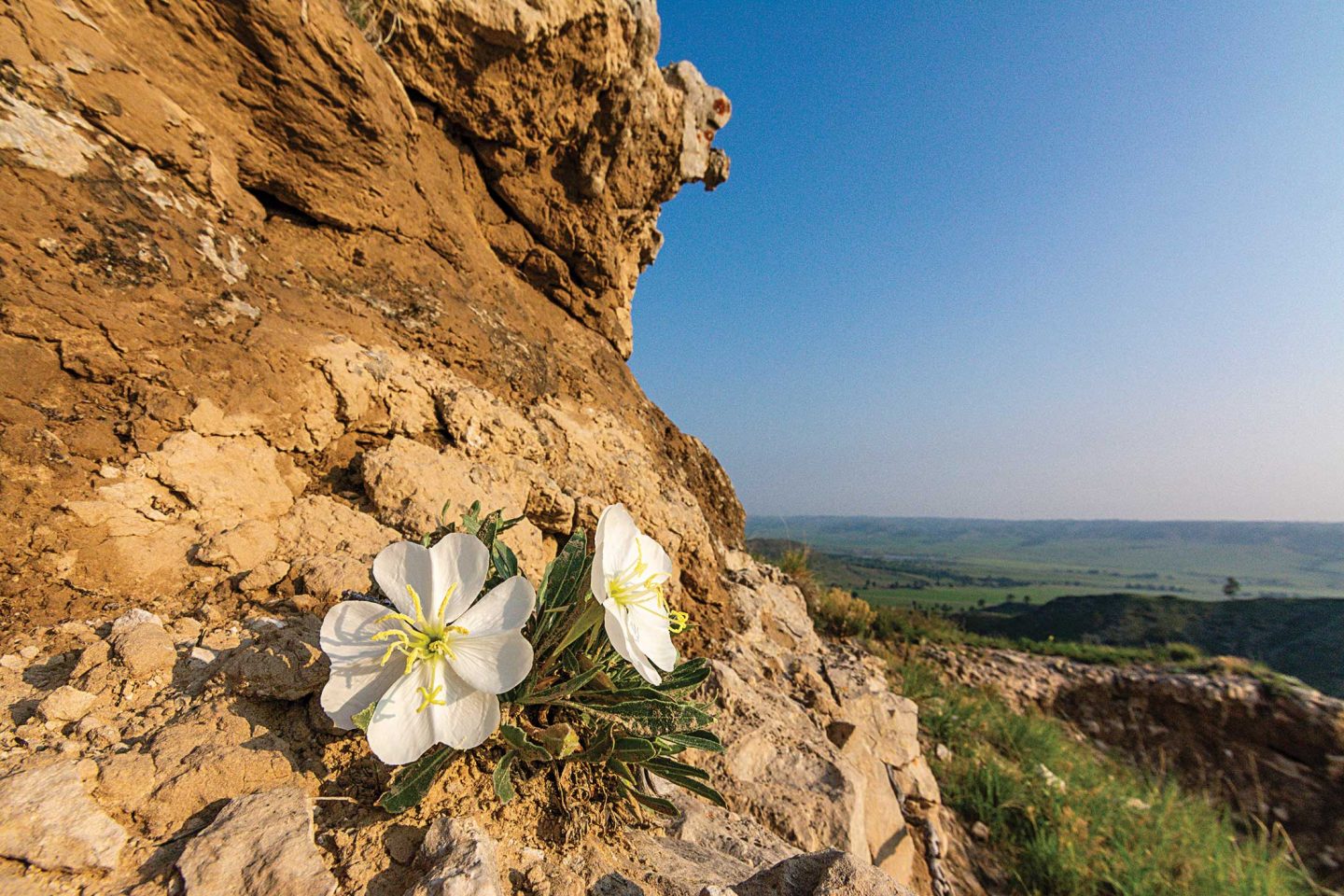
By Chris Helzer
I’ve always had a soft spot for plants that can thrive where rainfall is scarce. The saguaro cactus is a spectacular example, of course, growing up to 40 feet tall in the Sonoran Desert. It has numerous adaptations that have allowed it to flourish in an environment that doesn’t seem suited for perennial plants.
While desert plants are impressive, many examples of Nebraska species are equally inspiring. It’s tough enough to flower and produce seeds in the dry Nebraska Panhandle when you grow in the relatively fertile soils along creeks or rivers. The plants I admire most are the ones that don’t even appear to need soil at all. They seem to survive purely on grit and stubbornness.
Whenever I see a gumbo lily blooming prolifically in what looks like pure clay or sandstone, I feel like it deserves celebration. That’s not soil! It’s just soft rock, and not the kind Michael Bolton likes. How is that plant getting enough water and nutrients to survive, let alone to produce numerous showy flowers?
Similarly, little stemless hymenoxys plants growing out of a sheer stone cliff, or in the tiniest of cracks on a rock outcropping, deserve way more accolades than they get. We all learned about plants in school. You might even remember the five things plants supposedly need to grow: sunlight, proper temperature, moisture, air and nutrients.
Well, plants growing out of rock get sunlight and air easily enough, I guess. Proper temperature is up for debate. Being baked by the summer sun on a shade-less slab of stone or clay sure doesn’t seem “proper” to me. More to the point, where do those plants get moisture and nutrients?
Plants can apparently produce acids that dissolve rock and release nutrients their roots can then absorb. That’s incredible, but also seems insufficient to support the nutritional needs of a plant. Depending upon the situation, rainwater can help carry nutrients from elsewhere into the thin crack a plant is rooted in. Fair enough, but that implies there’s enough rainfall to make that happen.
Parts of the Nebraska Panhandle average 15 inches of rain per year, with significantly less falling during frequently-occurring droughts. Any farmer or rancher will tell you how difficult it is to grow plants in that little rainfall, and that’s assuming those plants are rooted in soil. Growing plants in pure clay, sandstone or limestone seems impossible, even with abundant rain. Doing so in what seems optimistically called a “semi-arid climate” is mind-blowing.
Can we all agree to extend these plants a little more attention and recognition? Maybe just a slow clap at Fort Robinson, Courthouse and Jail rocks or wherever else you encounter them? A few encouraging words on a hot, dry summer day? Or, at the very least, the courtesy of not stepping directly on them as you walk across an otherwise bare expanse of sandstone or clay?
As humans, we tend to admire pluck and hardiness. Those characteristics don’t just apply to people, or even animals. Some of the pluckiest, hardiest organisms live right in our state, quietly persisting and providing beauty for all of us to enjoy. How lucky are we?
